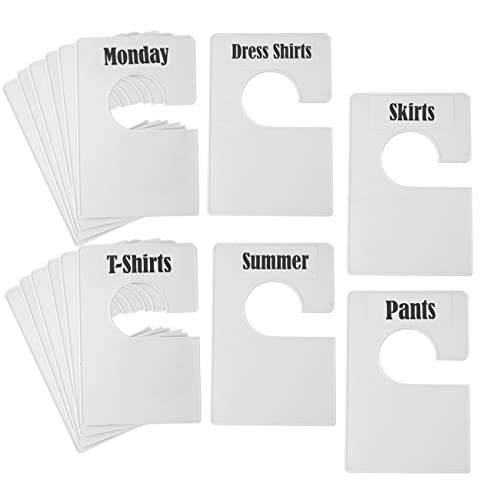How to organize a closet in 3 simple steps – and 25 easy closet organization ideas to help you maintain order every season
Acing the basics creates a foundation for more relaxed mornings

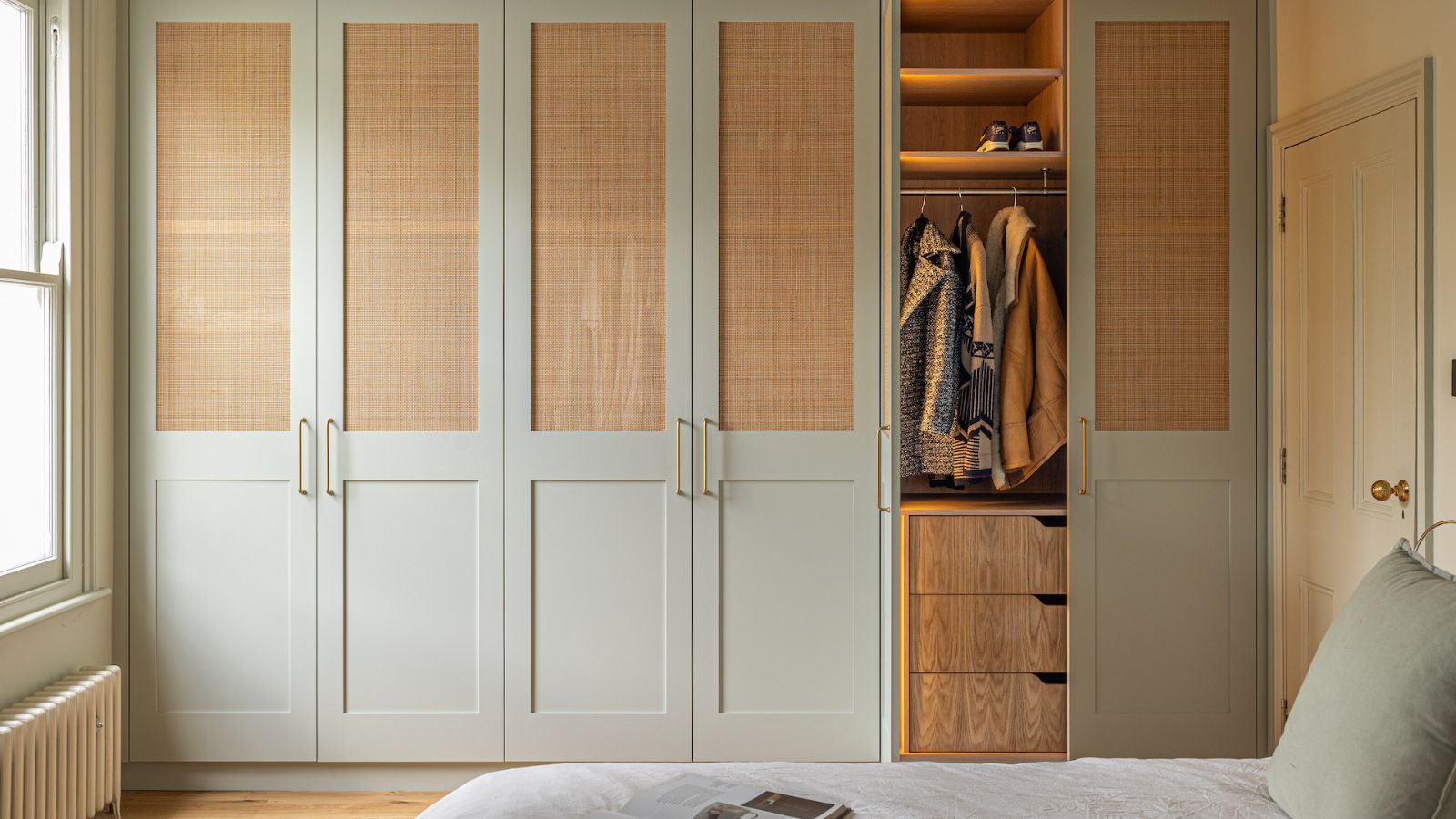
Organizing a closet can make even the most overwhelming bedroom feel a little less stressful.
By sorting, streamlining, and creating systems that fit your lifestyle, you can turn your closet into a space that works for you, rather than against you.
It doesn’t need to be picture-perfect, just practical enough to save time and cut down on daily frustration. These 25 steps to organizing a closet are the ideal starting point for organizing a bedroom.
How to organize a closet
Before you can start implementing closet organizing ideas, you need to work through some cleaning and decluttering methods, first:
- Take everything out: To make decluttering and organizing a closet easier, take all of your clothes out using the chaos method so you can see everything in one go.
- Clean: With everything out of your closet, clean your storage. Wipe down the walls with a cloth and an all-purpose spray (such as Attitude, from Walmart), and vacuum the floor. Don't forget to dust any shelves and rails, too.
- Declutter as you tidy: As you put everything back and organize your closet, declutter clothes, getting rid of the items you no longer love or wear and editing down duplicates. The toddler method helps make quick decisions based on what you like the most.
With those steps complete, then you can start organizing a closet to avoid clothes storage mistakes.
Closet organizing ideas
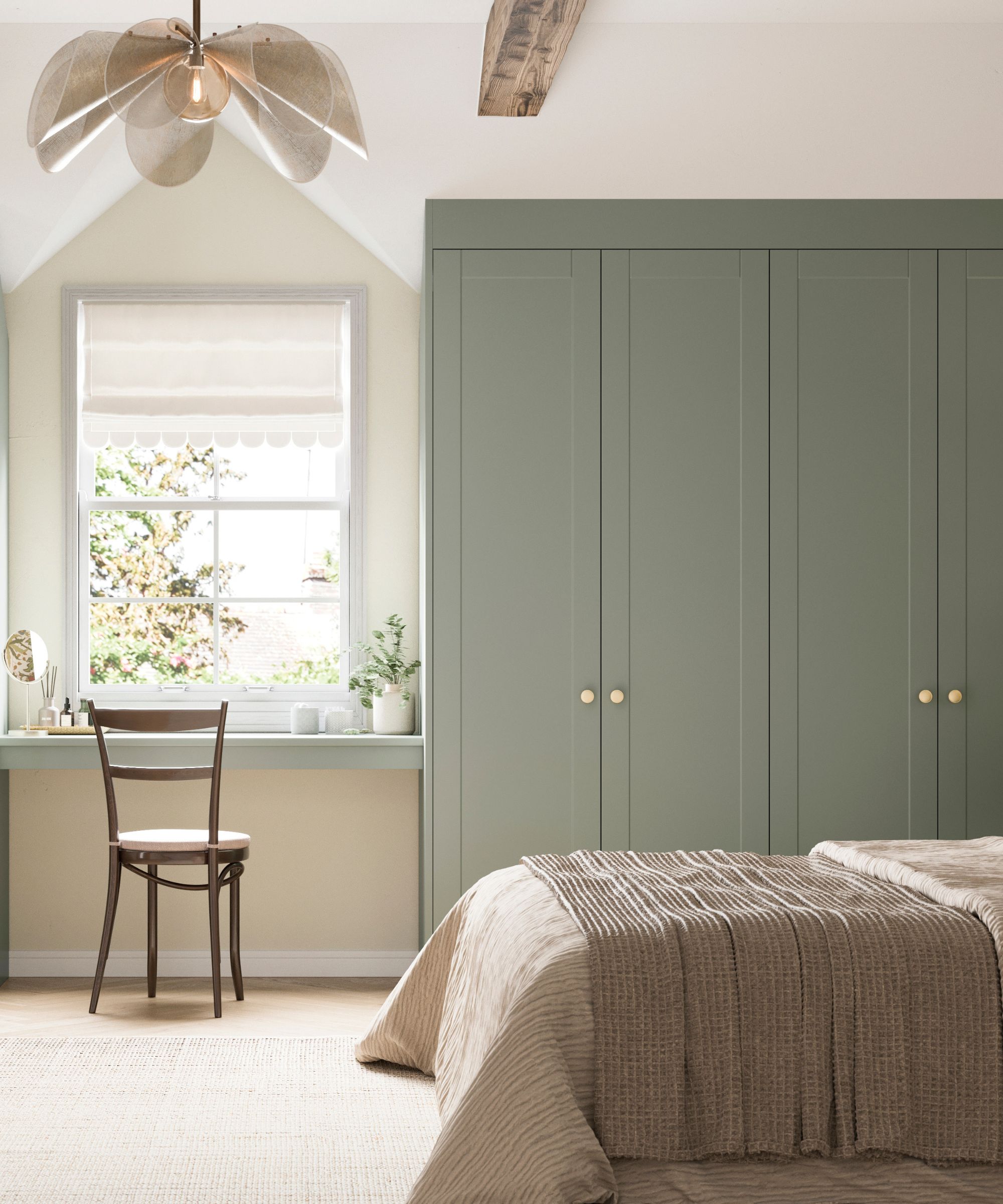
A well organized closet instantly makes a bedroom more peaceful and functional.
1. Separate seasonals
One of the items you're likely storing in the wrong place is your seasonal clothing. For a truly organized closet, you should keep your cold and warm weather clothing separate.
Brenda Scott, professional home organizer and owner of Tidy My Space, says, 'When dealing with small closet ideas, clean and store out-of-season items in clear totes either on a top shelf, in another closet, or in a separate storage room.'
Design expertise in your inbox – from inspiring decorating ideas and beautiful celebrity homes to practical gardening advice and shopping round-ups.
To save space, store away last season's clothes in vacuum packs from Walmart or inside luggage when storing suitcases.
Brenda continues, 'If you have plenty of room in the closet, just leave out-of-season clothes in there because you can layer up and use all-season tops, blouses, and some dresses all year long. Keep them separate, however, keeping warm clothing on one side of the rail, and cooler clothing on the other.'
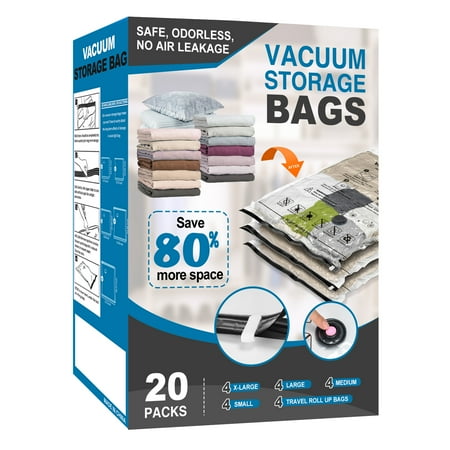
Vacuum storage bags are ideal for seasonal storage, keeping clothes and household linens safe from pests and moisture, without them taking up valuable storage real estate.

For items you cannot hang such as sweaters, use zip up garment boxes with clear fronts so you can still see and access items easily, while protecting delicate items from pests.

These under-bed storage bags on wheels are easy to pull out, and maintain good ventilation for items to prevent mold or musty bedroom smells.
2. Safely store sentimental
Decluttering sentimental items can be tricky, especially when it comes to clothing from special occasions.
However, there’s no point dedicating prime closet space to them, so set aside a storage box or underbed storage ideas for sentimental items only – those jeans you might’ fit back into one day? They don’t count! Letting go of the items your 'fantasy self' holds on to can be hard, but the space you'll regain for getting rid of these elements will be worth the emotional strain.
Put plastic covers from Amazon over the items you do want to keep, such as suits, coats, and evening dresses, and hang them in a spare closet or another room so they're not cluttering up your day-to-day clothes.
If you have an ottoman bed, the storage space underneath is handy for these bulky or long items that usually take up a lot of space in your closet but are not worn often.
3. Organize by use
When deciding exactly what lives where in your closet, it’s important to consider accessibility.
Elaine Penhaul, interiors expert and owner of home staging company, Lemon & Lime Interiors, suggests, ‘Store your most used items towards the front and your less used items towards the back and up high.'
It sounds simple, but when it comes to maintaining closet organization, it’s a real game-changer. Dedicating prime storage real estate to your everyday clothing will not only make life easier but will keep your closet tidier in general – the less rummaging around you have to do the neater it will stay.
When it comes to working out what items deserve ‘most-used’ status, be realistic. Think about what you really wear day to day, not what you’d like to wear day to day. ‘There’s no point in cocktail dresses taking up your main space if you barely use them’, adds Vicky Silverthorn of You Need a Vicky.
4. Sort by category
Storing like-with-like will mean you can always find what you're looking for.
Diane Quintana, professional organizer in Chronic Disorganization and owner of DNQ solutions, recommends, 'Hang categories of clothes together, such as shirts, tops, pants, skirts, dresses and jackets. You can fold sweaters or put them on a shelf in the closet if you have the space.'
Using slim velvet hangers, such as the Zober Velvet Hangers from Amazon, which are available in a 50-pack and rated 4.8 stars by over 89,000 shoppers, will stop your clothing slipping off whilst also reducing visual clutter because of its uniformity - a pro tweak when decluttering your closet.
Alternatively, you can also try the budget-friendly coffee mug hanger closer trick. That way, when you're next searching for a specific pair of jeans or dress, you'll know exactly where to find it.
5. Work by color
While it may not appear to be of practical use, arranging clothes in order of heavy fabrics to light, and in color order to create an ombre effect, will make your closet look visually appealing and harmonious.
Plus, maintaining a color-organized closet can help you create outfits each morning.
6. Use rail dividers
If you want an added layer of visual division in your closet (especially if your rail is packed full), consider picking up some labeled rail dividers from Amazon.
These dividers can help keep categories of clothing separate, so there is no more frustrated digging through piles of fabric to find what you need.
I particularly like using them to organize a closet I share with a partner.
7. Invest in quality organizers
Your walk-in closet organization is only as good as the storage products you choose to fill it with, continues Meaghan Kessman, home organizer.
To start, she recommends investing in high-quality clothes hangers to enhance the functionality of your closet while contributing to a neat and visually appealing space.
‘Utilize space-saving velvet hangers [from Walmart] to prevent clothes from slipping,’ she adds. ‘Drawer dividers help organize smaller items like socks, underwear, and accessories. Shoe racks or cubbies keep footwear neatly arranged and easily accessible. Incorporate clear acrylic bins for storing items you want to see at a glance, such as scarves, belts, or handbags.
‘It can also be a great help to install a double hanging rod to maximize vertical space, allowing you to hang shirts and jackets on the top rod and pants or skirts on the bottom rod,’ she adds.
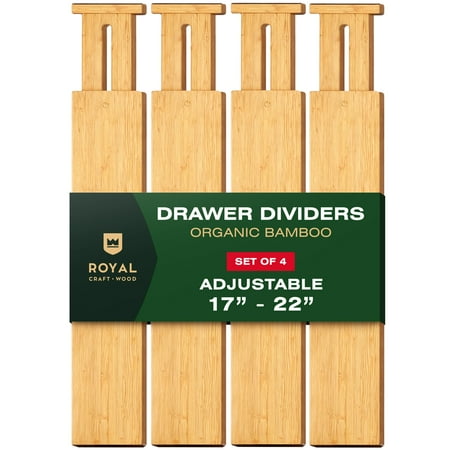
These deep drawer dividers are ideal for dressers, keeping file folded clothing in neat stacks or easy perusal.

Measuring 8x10x11 inches, these handwoven water hyacinth baskets are ideal for keeping folded clothing or loose accessories neat on shelves.
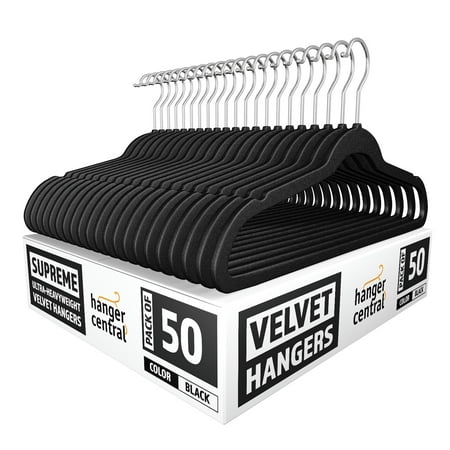
You would be hard-pressed to find a pro organizer who doesn't love velvet slimline hangars to organize a closet. They keep clothes in place without taking up too much space.
8. Use valet hooks
The benefit of a well-organized closet is a much smoother morning routine, made even easier if you pre-plan outfits ahead of time.
If you’ve got the space, consider inserting an extra rod or valet hook from Amazon to hang what you need for the next day.
9. Use vertical space
Marshall Webber, CMO of Stor-It, says, 'Wall space is for sure the best way to optimize a small closet space. I am a huge believer in spending the time and money to invest in quality built-in shelving units. Rarely do we ever need a closet that has one big open space.'
Dianne adds, 'I like to bring in products which make use of the space below the hanging rail and above. Put shoes you don't wear often in clear plastic boxes, such as the Mainstays Clear Plastic Glossy Extra Wide Shoe Box with Lid from Walmart,' which can stack neatly on the floor below or shelves above.
10. Consider accessories
When organizing a closet, consider whether you would like to keep your accessories with your clothing or not. This will be easier if you have a large or a walk-in closet.
If storing accessories inside your closet, organize jewelry in a box organizer from Amazon to prevent them from getting lost or tangled. Shoes can be stashed in drop-front shoe boxes from The Container Store.
Then Danielle Dorn, creative director at mDesign, says, 'Use hooks and pegs on walls, doors, or even over the door hooks to hang items like bags, hats, and organize belts. This prevents these items from taking up closet space and gives them a dedicated place so they don’t end up misplaced or left in a pile.’
We like the Elfa door-mounted organizer from The Container Store, which is fully customizable to suit your needs.
11. Light it up
Closet lighting ideas can instantly make bedroom storage look more expensive.
Interior designer Laura Roberts says, 'Simply illuminating a small space can help to give the impression that it’s larger than it really is, not to mention help you pick out a matching pair of socks first thing in the morning!’
Long-lasting, energy-efficient, and generating a minimal amount of heat, LED bulbs are the most efficient for a closet. We recommend these motion sensor cabinet lights from Walmart, which are rechargeable for convenience.
12. Know what to hang vs. fold
Generally, folding clothes neatly is the most economical way to store them; however, some items are best hung up, such as coats, suits, blouses, dresses, and garments made from fabrics that will crease easily if folded.
Meghan Cocchiaro, professional organizer and owner of Organized by Meg, shares, ‘I always recommend hanging as much clothing as possible for my clients, and I do this for myself. I find hanging clothes to be easier and faster than folding, and it allows you to see everything at once.
'You'll be amazed at how much just seeing your things enables you to wear them more.'
One thing to remember is that you should never hang any sweaters made from wool or cashmere, as they can become misshapen and form unwanted dimples in the shoulders. Instead, wool and cashmere sweaters should be folded and placed on shelves.
13. Add drawers
If you have a large closet – one that is built into the house, for instance, then adding or buying a nice dresser could be the perfect storage solution to make the most of otherwise dead space, professional organizer Lauren Saltman, owner of Living. Simplified. suggests.
Try to opt for the tallest or widest dresser or chest of drawers you can fit in your closet space to optimize your storage possibilities and make organizing your dresser easier in the long run. Even a slim freestanding cabinet can be repurposed for accessories or small items that are fine to be folded and can be tucked into the tightest corners.
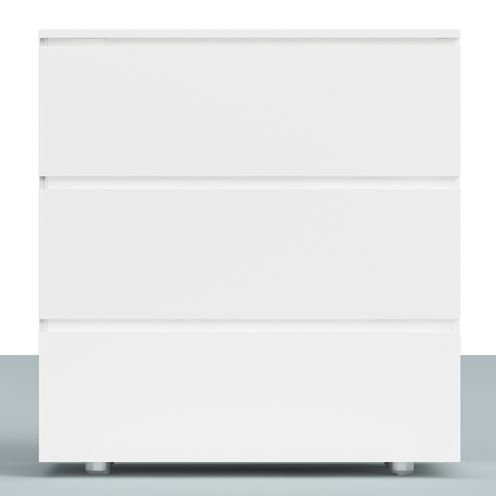
Available in four colors, these hand drawers are nice and narrow for smaller closets.
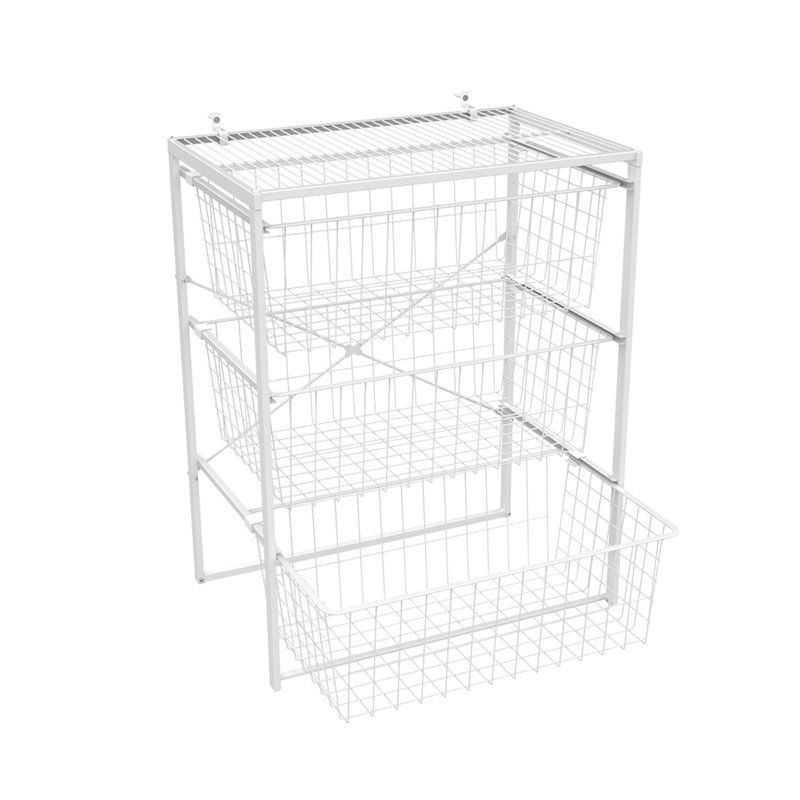
Ideal for very small closets, these wire drawers are perfect for gym gear, shoes and larger accessories.
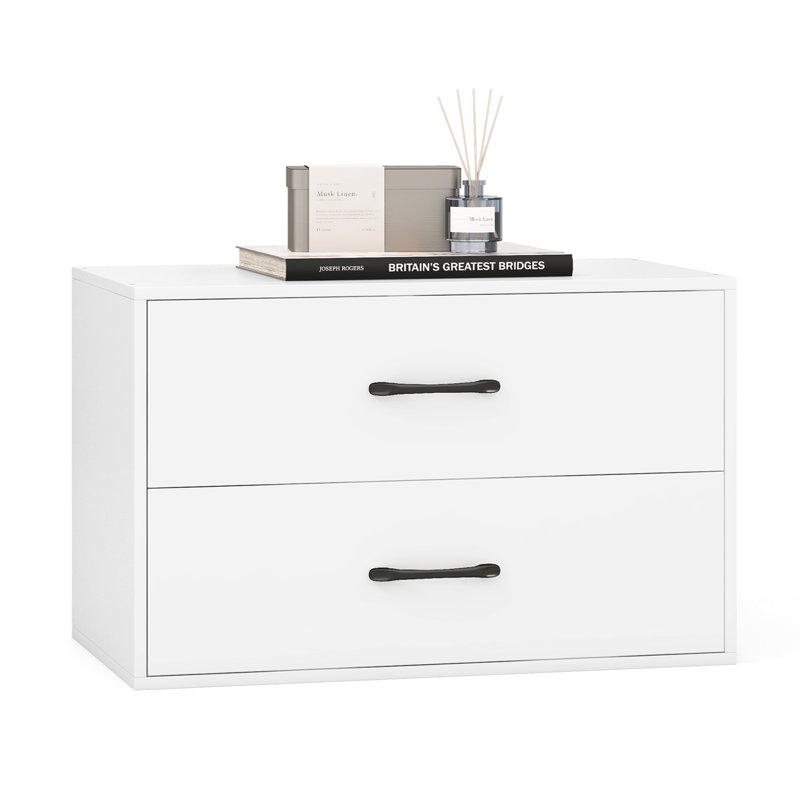
These low-profile drawers are ideal for closets, as they do not get in the way of low-hanging items such as dresses.
14. Go bespoke
One of the best closet organization ideas is to make sure everything has a designated place.
Bespoke closets are great for rooms with features such as alcoves and sloping ceilings, as they can fit in where a freestanding wardrobe just wouldn’t go.
Here, a mix-and-match combination of fixed or pull-out clothes rails, drawers, and shelving can be installed.
15. Close it off
To enhance your relaxing bedroom ideas, close off your closet so that you can not see into it when you are not actively using it.
This has the added benefit of keeping your clothes storage neat, clutter contained, and protecting garments from dust and pests, as well as avoiding any potential fading in sunlight.
Closet doors are the obvious choice, but curtain closet ideas can offer a fun alternative. Tension poles, from Walmart, make them an ideal solution for renters, too.
The visual clutter from open storage can spike your stress hormones as the brain registers it not as furniture, but as a job that you still have to do.
16. Separate worn-once clothing
It is easy to fall into the trap of flinging half-worn clothing onto a chair or island and leaving it there to build up.
Instead, it can be helpful to develop something such as a clothing peg board to keep half-worn clothing on display and ready to grab the next day, or add a visible basket, such as from The Citizenry, to collate items to sift through before picking out something fresh from your rails each morning.
This will keep the closet neat and ensure you cycle your clothing efficiently.
Having a laundry hamper with separate areas for different colors, such as the Joseph Joseph Tota Trio hamper available at Amazon, can also curb any avoidance of sorting out your dirty garments and make doing laundry quicker.
17. Use the door
A popular closet organizer is an overdoor storage solution. These organizers really come into their own when you are lacking in hangers or can't fit a dresser in the closet space.
The Elfa organizer from The Container Store is one option, and it is ideal for smaller accessories. To add shelving without drilling, this five-shelf pantry organizer from Walmart is a great alternative, offering space for folded clothing alongside your hanging rails.
18. Add shelving
Danielle Dorn urges, ‘It is important to be sure you have a good shelving system.
'If your closet doesn't have any built-in, you can create your own with items that work for your space, such as fabric hanging organizers from The Container Store.'
19. Introduce technology
When we think of setting up a smart home, we usually think about digital assistants, lights, and home security – but why not extend it to your closet?
Stephanie Deininger, professional home organizer and founder of The Organized Flamingo, shares, ‘Another tip I have is that if there was ever a time to use a virtual closet app, a capsule wardrobe would be it.
'You can record the items you have and plan your outfits on the app; it’s a great way to stay organized and find inspiration.’
20. Label storage bins
Storage baskets and bins are a great way to keep closet organization simple, offering you space to toss clothes when needed, or keep folded items near.
Pro organizer Lauren Saltman adds, ‘Just be sure to label the bins on the outside so you don't have to search each morning for the appropriate bin.’
21. Double up on rails
One of the best ways to maximize clothes hanging space is to double up the rails. If you cannot install a permanent rail, you can find adjustable height hanging rails at Amazon that suspend from your existing rail.
These are ideal for rails where you have lots of shorter items hanging together. You can also add a tension rod in a slimmer wardrobe, under your existing rail, especially if the top one only houses shorter items such as shirts, blouses, and sweaters.
22. Keep items off the floor
While using the floor can seem like a great way to expand your storage ideas when organizing your closet, for professional home organizer Shanice Jones, it should be a last resort.
Her 'clear-floor policy' dictates that the only items on the floor of a closet should be neatly stacked storage bins. This prevents overwhelming clutter and encourages you to keep your closet neat.

Stackable show boxes can make good use of space on floors without your closet organization looking messy.

These two-in-one hangers can keep multiple things on one hanger to pair outfits up and save space.
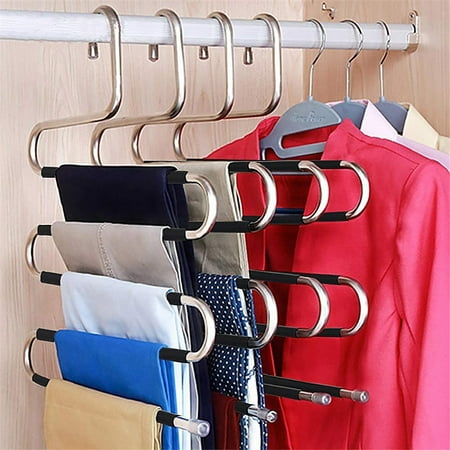
These multi-item hangers are ideal for trousers and skirts. They are a lifesaver for keeping lesser-used items neat without condemning them to the space beneath the bed.
23. Add a laundry hamper
Larger closets often have space to hide a laundry basket, helping to keep your organization centralized, reducing the risk of clothing ending up in piles around your room.
The Joseph Joseph Tota Laundry Hamper, from Wayfair, has pre-divided baskets to make sorting clothes for laundry simple.
24. Prevent pests
There are several insects that cause holes in clothes, making pest prevention an important part of closet organization.
Storing natural-fiber clothing in garment bags from Walmart is a good start. Then, consider adding hanging cedar blocks from Amazon to help deter moths.
Cleaning your closet regularly can also help, as well as using natural pest deterrents and a homemade moth repellent.
25. Maintain closet organization monthly
The first time you organize your closet is going to involve the most investment in terms of time and effort. However, the more often you work on closet maintenance, the less effort it will require.
A quick tidy once a month, along with a couple of re-organizations twice a year as the weather changes, should keep it in tip-top order.
Pre-season is a good time to revisit. Anything that’s not been worn since your last clear out, sell, donate, or get rid of.

With over 2,000 five-star reviews, this handheld garment steamer is a great investment for anyone with an awkward closet that leaves clothes looking a little worse for wear. Reviewers love that it is lightweight and effective, with some claiming it has drastically improved their laundry days.
Feeling motivated? Once your closet is in good shape, try out some other home organizing ideas to reduce the stress of disorganization elsewhere in your home.

Chiana has been at Homes & Gardens for two years and is our resident 'queen' of non-toxic living. She spends most of her time producing content for the Solved section of the website, helping readers get the most out of their homes through clever decluttering, cleaning, and tidying tips. She was named one of Fixr's top home improvement journalists in 2024.
